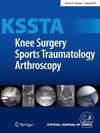The collagen-augmented chondrogenesis technique demonstrates superior cartilage repair compared to microfracture for cartilage defects of the knee joint, regardless of age
Abstract
Purpose
This study investigated whether age affects clinical outcomes and cartilage repair quality in patients who underwent collagen-augmented chondrogenesis.
Methods
The study included patients who underwent either the collagen-augmented chondrogenesis technique or microfracture for cartilage defects of the knee joint of International Cartilage Repair Society grade 3 or 4. Patients were categorised according to an age threshold of 50 years and the treatment method, whether collagen-augmented chondrogenesis technique or microfracture. Group 1 comprised 31 patients aged 50 years or older who received the collagen-augmented chondrogenesis technique, Group 2 consisted of 32 patients under the age of 50 years who received the collagen-augmented chondrogenesis technique and Group 3 included 243 patients aged 50 years or older who received microfracture. Clinical outcomes were assessed using the walking visual analogue scale (VAS) for pain and the Western Ontario McMaster University Osteoarthritis Index scale score (WOMAC) two years after surgery. For patients with magnetic resonance imaging results 1 year postoperatively (Group 1: 30 patients; Group 2: 31 patients; and Group 3: 31 patients), Magnetic Resonance Observation of Cartilage Repair Tissue (MOCART) assessment was used to evaluate repaired cartilage lesions.
Results
There were no significant differences in the VAS and WOMAC scores between the three groups 2 years after surgery (all n.s.). The MOCART score in patients who underwent MRI at 1 year postoperatively showed significant differences in the degree of defect repair, integration with the border zone, surface of the repaired tissue, adhesion and total score among the three groups (all p < 0.05). Post hoc analysis revealed no difference in the total MOCART scores between Groups 1 and 2. However, Groups 1 and 2 had significantly higher MOCART scores than Group 3 1 year after surgery (all p < 0.05).
Conclusion
The collagen-augmented chondrogenesis technique group showed improved quality of cartilage repair compared to the microfracture group, regardless of patient age. Compared with simple microfracture treatment, there were no differences in clinical outcomes between the patient groups, related to age.
Level of Evidence
Level Ⅲ.

 求助内容:
求助内容: 应助结果提醒方式:
应助结果提醒方式:


